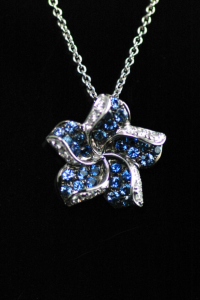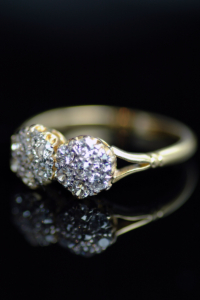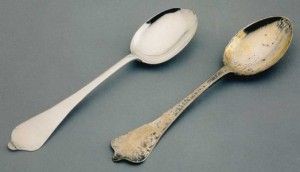This website uses cookies so that we can provide you with the best user experience possible. Cookie information is stored in your browser and performs functions such as recognising you when you return to our website and helping our team to understand which sections of the website you find most interesting and useful.
Goodwins’ Guide: Cleaning Jewellery
GOODWINS’ GUIDE TO CLEANING JEWELLERY AND SILVER:
If you want to keep your diamonds (emeralds, sapphires…) sparkling, it’s important to look after your jewellery. Dirt is what blocks the light, making stones appear dull. But what’s the best and safest method for looking after these valuables?
Customers sometimes ask if they should invest in an ultrasonic cleaner. These devices work by shaking dirt away via sonic pulses. We do have an ultrasonic in our basement workshop, but advise caution: not everything can go into an ultrasonic, so for normal domestic use, using one is probably inadvisable. Be aware that you must never put emeralds or pearls in an ultrasonic. Both are too fragile for such jostling. [For a reminder about caring for pearls, see our post: https://www.goodwinsantiques.com/goodwins-guides-pearls/.]
When cleaning precious and semi-precious jewellery, always consider how your piece is mounted. For example, you may have a ring or necklace (as above) composed of a grid containing small stones. If one pops out, you can’t replace it. Jewellery is best cleaned by hand. First, plug the sink to ensure that nothing goes down the drain. Then, all you need is hot water, a few drops of ordinary washing up liquid, and a soft-bristled toothbrush to get behind the stones. Soak the piece for a few minutes in the warm, soapy water, then very gently apply the brush around the setting to get to the back and sides of your stone. Rinse the item to remove all traces of soap and pat it dry in a soft towel or cloth.
Depending on how often you wear the piece, you can clean it every week. Be sure to get any jewellery you wear daily checked out several times a year. Make regular appointments to have your trusted family jeweller ensure that the claws are secure and in good repair and check the stones for damage. They will likely clean it for you free of charge at this time.
Cleaning silver is a slightly different proposition. When we — Ben and Joe — were boys, our father Ronald started us off polishing silver. We spent hours in the shop’s basement learning how to clean silver and remove engravings by hand. Believe it or not, silver benefits from regular use and handling, and you can use a soft cloth to remove traces of tarnish every couple of weeks. You can also buy special silver polishing cloths.
There are several other good products on the market, including Brasso and Silvo, and pink rouge paste. Once you’ve applied the cleaner, dampen a cloth and work it in gentle circles around your object. The cloth will turn black as it pulls up the dirt. We recommend this method because it creates a much higher polish than simply dipping silver: you’re actually polishing out the scratches. Using a clean, soft cloth, give the piece a burnish to bring up its patina. Don’t be too aggressive, though!
Hotel Silver Dip is a red liquid mainly used for large pieces or for quantities of cutlery. If you use this method you’ll need two large containers. Plastic tubs are good as they won’t scratch your silver. Into one, pour an inch or so of the solution. Put the silver into this bath and leave it to soak for two or three minutes. Remove it and plunge the silver into another tank filled with warm water to remove all vestiges of the dip, which is quite corrosive. Then pat dry.
You can also buy foaming silver polish, which is applied with a sponge. Once it’s foamed up, run your piece of silver under warm water to wash away the dirt. Pat dry.
Silver that is kept behind glass or in a special canteen tends not to tarnish as quickly as pieces that are displayed out in the open. These will oxidise: the silver turns slightly yellow at first, then darker and darker, until it turns black.
We do not recommend lacquer silver, which was the height of fashion in the 1920s and 30s. What happens to these pieces over time is that the lacquer bubbles, creating a mottled effect that you can’t remove via normal cleaning methods. You have to take such a piece to a professional who can burnish and repolish it.













